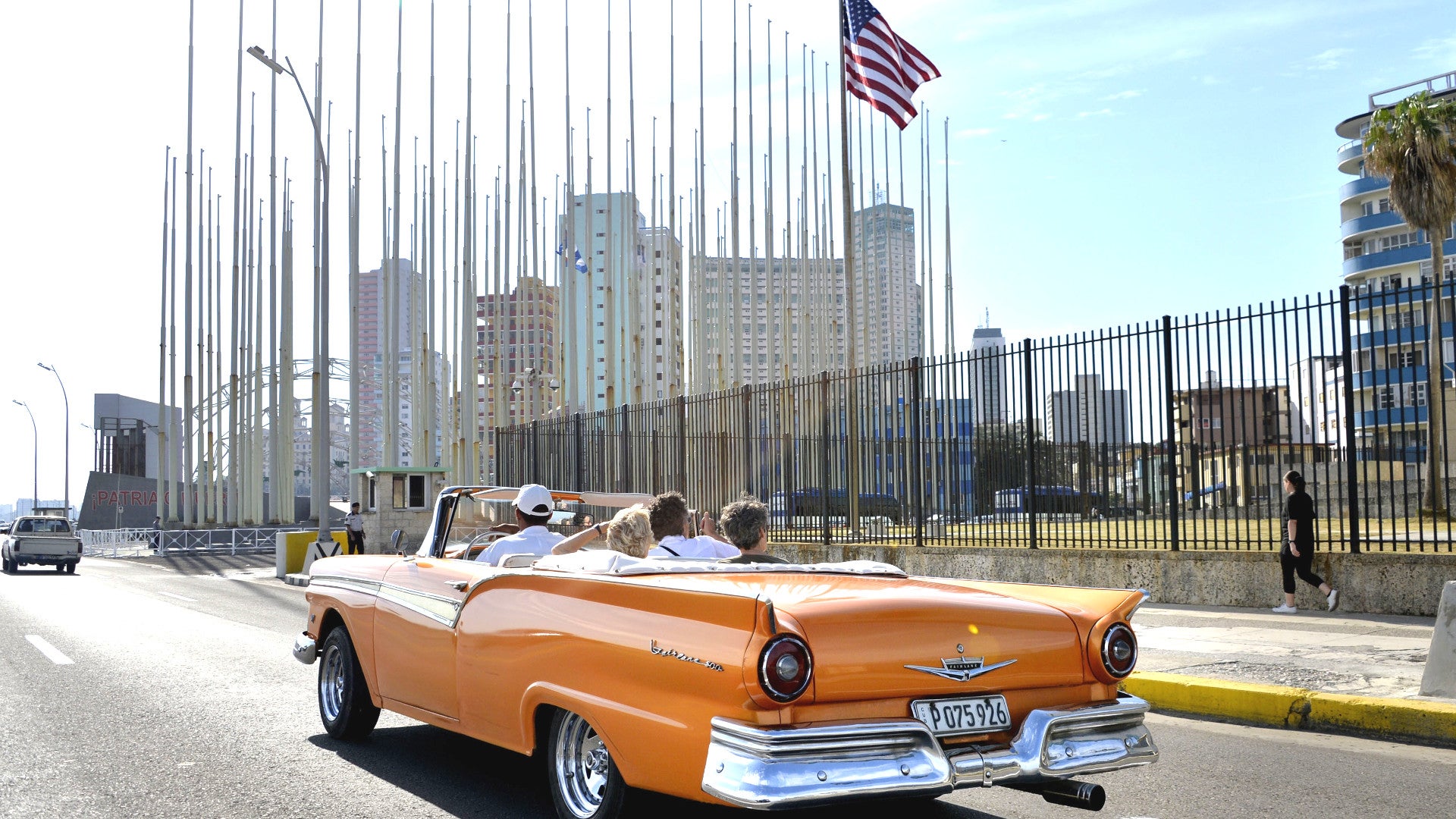After months of investigations, the circumstances behind bizarre series of apparent sonic attacks on American diplomatic staff in Cuba, which left some individuals seriously injured, are as mysterious as ever. Now, The Associated Press has revealed the first public recording of what some sources say are the sounds they heard during the assaults.
On Oct. 12, 2017, the wire service posted an enhanced version of the noise online, having only increased the volume and removed background noise. The report did not say where the recordings had come from specifically, beyond a site or sites in Cuba, but added that the U.S. Navy also had copies for analysis. Neither the Navy nor the State Department would confirm the authenticity of the audio. Cuban officials would not say whether they had their own copy.
“That’s the sound,” one of AP’s sources said, according to its report. Beyond that, the entire episode, including how the attacks occurred and why, remains almost entirely unexplained.
At the heart of the issue is the exact reason that the wire service can safely post the clip safely online. Experts almost unanimously agree that it would be extremely difficult if not impossible to cause physical injuries like the ones American government sources have described to the press using any sort of sonic weapon that would be small enough for American officials not to notice.
Below is the recording, which AP posted on YouTube. There is no indication that it is unsafe to listen to in this format.

“If you want to produce a tight beam of energy that you can point at someone, ultrasound is the one to go for,” Tim Leighton, a professor of ultrasonics and underwater acoustics at University of Southampton in England, told The Guardian in September 2017. “If you want to put a lot of power into it so you could produce a beam that could go through windows, it starts to look more like a suitcase. In order to generate hearing loss at 50 meters away, you’d be looking at a car-sized device.”
Ultrasound frequencies are too high to be audible to the human ear. Another option would be inaudible infrasound, which is lower than the range of noise people can hear.
But as the clip suggests, the sounds are audible, at least to some degree. The recording AP obtained has the cricket-like qualities some sounds had previously noted. There were also reports of “grinding” sounds, ringing in the ears, and temporary deafness. The resulting symptoms, which have included long-lasting and possibly permanent hearing loss, disorientation and dizziness, and even concussions and brain swelling, are equally diverse.
“The concussions, brain swelling and other symptoms like that have no possibility to be created by sound,” Dr. Joseph Pompei, a former researcher and psychoacoustics expert at the Massachusetts Institute of Technology, told Public Radio International earlier in October 2017. “Somebody would have to be in a large bathtub, covered in ultrasonic transducers at a very high power.”

That being said, something has injured American diplomatic staff in Cuba. The State Department has confirmed the incidents and that some individuals had to receive medical treatment. There is a distinct suggestion from the recording AP has released that sounds are man-made, too.
“What it is telling us is the sound is located between about 7,000 kilohertz and 8,000 kilohertz,” Kausik Sarkar, an acoustics expert and engineering professor at The George Washington University, told AP after listening to the audio. “There are about 20 peaks, and they seem to be equally spaced. All these peaks correspond to a different frequency.”
Whatever is causing the noise, the attacks have led to a cooling of U.S.-Cuba relations, which had been improving since President Barack Obama eased travel and economic restrictions for Americans visiting the island and reopened the American Embassy in Havana in 2015. The U.S. government has so far avoided accusing Cuban authorities of being behind the attacks, instead accusing them of failing to meet their obligations to keep international diplomatic personnel safe.

The United States has still retaliated over the incidents. Just in October 2017, the U.S. government expelled 15 Cuban diplomats and demanded a further 60 percent reduction in personnel working at the country’s Embassy ion Washington, matching an earlier voluntary reduction in the total number of Americans in Havana. In September 2017, the State Department had ordered all nonessential personnel out of Cuba, saying it could not guarantee their safety.
Cuban officials continue to insist that they are not behind the attacks and are working through their own investigation into the incident. One prevailing theory is that at third party, most likely Russia, is behind the sonic barrages and sought to halt the warming of ties between Cuba and the United States, which it may have seen as a threat to its own interests.
Another possibility is that the Cubans were involved and were looking to retaliate against the policies of President Donald Trump and his administration. None of this adequately explains why Canadian diplomats, representatives of a country that has long had ties with Cuba, also fell victim to what appear to have been entirely separate, but similar assaults.
Based on the limited information available, it’s impossible to say for sure whether these individuals came under attack from some advanced sonic weapon or experienced some other odd confluence of symptoms. At least now you can listen to the chirping yourself.
Contact the author: joe@thedrive.com
